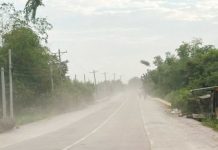
[av_one_full first min_height=” vertical_alignment=” space=” custom_margin=” margin=’0px’ padding=’0px’ border=” border_color=” radius=’0px’ background_color=” src=” background_position=’top left’ background_repeat=’no-repeat’ animation=”]
[av_heading heading=’New technology seen to boost seaweeds farming’ tag=’h3′ style=’blockquote modern-quote’ size=” subheading_active=’subheading_below’ subheading_size=’15’ padding=’10’ color=” custom_font=” av-medium-font-size-title=” av-small-font-size-title=” av-mini-font-size-title=” av-medium-font-size=” av-small-font-size=” av-mini-font-size=” admin_preview_bg=”][/av_heading]
[av_textblock size=” font_color=” color=” av-medium-font-size=” av-small-font-size=” av-mini-font-size=” admin_preview_bg=”]
ILOILO City – The Aquaculture Department of the Southeast Asian Fisheries Development Center (SEAFDEC) based in Tigbauan, Iloilo has developed a tissue culture technology that is seen to boost seaweeds production.
This technology involves producing cultivars by micro-propagation, according to SEAFDEC, which it disseminated through training and onsite demonstration.
The cultivars were also tested in different sites like Bohol, Tawi-tawi, Palawan, and Guimaras. The results were remarkably high at six to 10 percent per day growth rate using Kappaphycus plantlets from tissue culture.
The technology is now ready for commercialization to enhance the seaweed industry in the country.
Seaweed farming started in the 1970s in Mindanao by farmers simply tying seaweeds in lines, and now it has become a big industry, being a source of livelihood for about 120,000 farmers.
SEAFDEC data showed that seaweed is the number one aquaculture product by volume followed by milkfish and tilapia.
The bulk of the seaweed export consists of red seaweeds called Kappaphycus and Eucheuma, which is source of carrageenan.
Carrageenan is used as a thickener, binder, stabilizer, suspending agent in food products and specific use in the biomedical and industrial applications.
SEAFDEC said the decline in the seaweed industry in the last decade was mainly due to diseases and poor quality of seedling. (Elsa S. Subong, PIA-Iloilo)/PN
[/av_textblock]
[/av_one_full]





